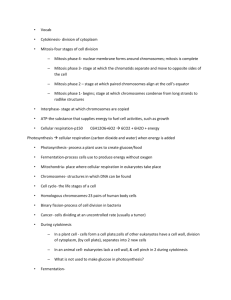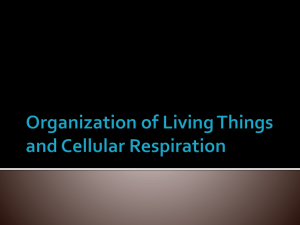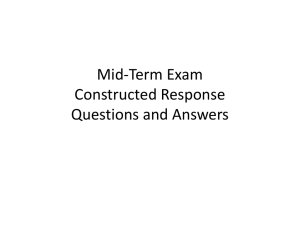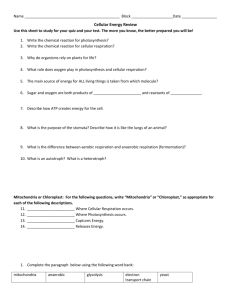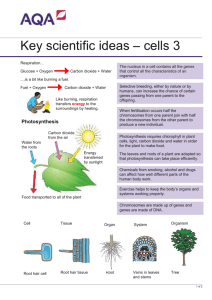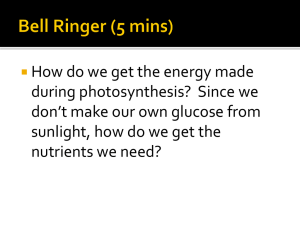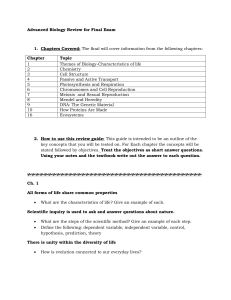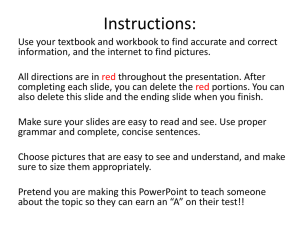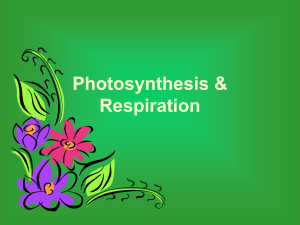Cell Processes - Madison County Schools
advertisement
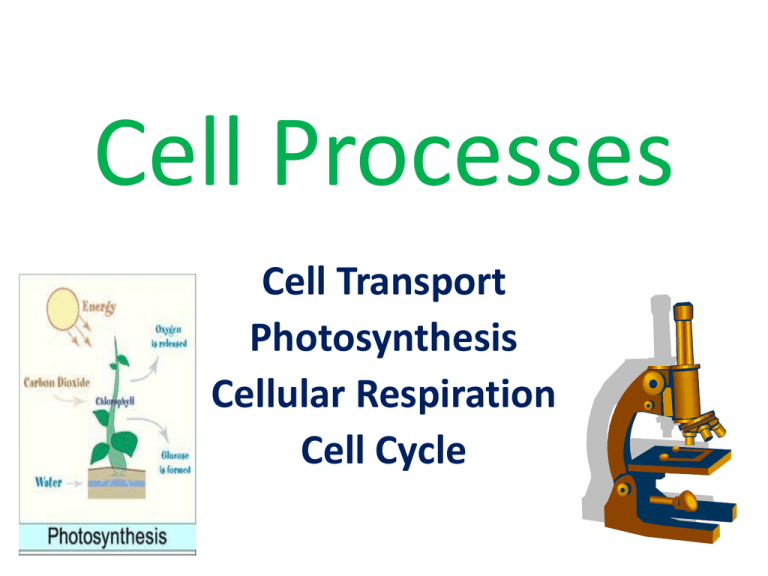
Cell Processes Cell Transport Photosynthesis Cellular Respiration Cell Cycle Exchange with the Environment • Diffusion- the movement of particles from an area of high concentration to an area of low concentration • Osmosis- the diffusion of water across a cell membrane No energy required Cell in Action • Passive transport- the diffusion of particles through proteins in the cell membrane from areas of high concentration to areas of low concentration- no energy • Active transport- the movement of particles through proteins in the cell membrane against the direction of diffusion • ---requires cells to use energy(active transport) Cell in Action • Endocytosis -the process in which a cell membrane surrounds a particle and encloses it in a vesicle to bring it into the cell • Exocytosis- the process used to remove large particles from a cell; a vesicle containing the particles fuses with the cell Cell Energy • Photosynthesis- the process by which plants capture light energy from the sun and convert it into sugar • Cellular respiration- the process of producing ATP from oxygen and glucose; releases carbon dioxide as a waste product Photosynthesis Photosynthesis • http://earthguide.ucsd.edu/earthguide/diagra ms/photosynthesis/photosynthesis.html • http://earthguide.ucsd.edu/earthguide/diagrams /photosynthesis/photosynthesis_game.html Photosynthesis can be represented using a chemical equation. The overall balanced equation is... 6CO2 + 6H2O ---------> C6H12O6 + 6O2 Sunlight energy Where: CO2 = carbon dioxide H2O = water Light energy is required C6H12O6 = glucose O2 = oxygen Learn these formulas Photosynthesis: transforms light energy to chemical energy stored in the bonds of sugar-occurs in chloroplast oUses carbon dioxide and water oProduces oxygen and glucose oOpposite of cellular respiration occurs in mitochondria Cellular Respiration Cellular Respiration Equation ATP ATP • The molecule that supplies energy to fuel the activities of the cell • Formed during cellular respiration in the mitochondria • Adenosine triphosphate ATP Glucose • a carbohydrate- form of sugar • Product of photosynthesis • C6H12O6 • The energy in glucose is- used by plant’s cells • Some may be stored in the form of other carbohydrates or lipids Fermentation • Fermentation is "the process of energy production in a cell under anaerobic conditions." • • Anaerobic is when a biological reaction or process can take place with the absence of oxygen. 2 types of fermentation • 1- Your muscles need energy faster than your body can provide oxygen to your cells to produce ATP by cellular respiration--• Fermentation produces lactic acid--- muscle fatigue • 2- fermentation that occurs in some bacteria and fungi • Ex. Yeast can make carbon dioxide and alcohol during fermentation of sugar. Cell Cycle • The life cycle of the cell • In eukaryotes (cells with a nucleus) it consists of 3 parts • 1-Interphase: cell growth and chromosome duplication • 2- Mitosis (PMAT) • 3- Cytokinesis C E L L C Y C L E Chromosome • Coiled structure of DNA and protein that forms in the cell nucleus during cell division • Humans have 46 chromosomes Binary Fission • The simple cell division in which one cell splits into two • Used by bacteria Homologous Chromosomes • Chromosomes with matching or similar information • Humans have 23 pairs of homologous chromosomes • Potatoes have 24 pairs of homologous chromosomes • An organism’s number of chromosomes has nothing to do with its complexity Chromatids • Identical copies of a chromosome • After each chromosome is duplicated(copied) - the 2 copies are called CHROMATIDS Centromere • The region that holds chromatids together when a chromosome is duplicated(copied) Mitosis • Nuclear division in eukaryotic cells in which each cell receives a copy of the original chromosomes • Mitosis makes sure each new cell receives a copy of each chromosome • Consists of 4 phases- PMAT • Prophase, Metaphase,Anaphase and Telophase • Second stage of cell cycle Cytokinesis • The process in which cytoplasm divides after mitosis • Animal cells-The cell membrane pinches in to form a groove—eventually pinching ALL the way through the cell • 2 daughter cells formed • ***Plant cells: Have a cell wall- these cells must first form a cell plate –in the middle of the cell-this becomes the cell membrane- then new cell wall formed Cytokinesis
